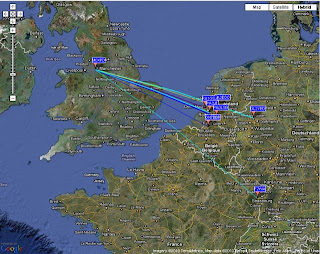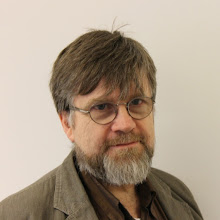I have stayed with the basic timing framework offered by Gene Marcus w3pm's excellent audio WSPR generator code, but added my own routines for the QRSS and Hell. This was easy-enough to do, as I'd already hacked the code to run with my VXO-based architecture and all three modes are just FSK.
Here's a screen-shot from Argo, captured locally, showing all three modes...

You can see the closing "d" of my call sign in QRSS, a S/MT Hell version of my call and (most of) my WSPR message. The frequency difference between the QRSS/Hell and the WSPR signals exercises pretty much all the range of my VXO - I have to work the bottom of the WSPR band, which places the QRSS/Hell emissions around 10.140050 MHz.
I turned the beacon on late yesterday afternoon and got good WSPR spots through the night (once again bucking the trend that had been established last week). Ususal dx to Douglas w3hh and very solid propagation to Al, ra6as...
OK - I give up - Image Upload isn't working. It is producing garbage like this (which I'll leave to shame the providers of this "service")...

I would like to have shown you the WSPR spots, but Blogger disagrees. I've tried different image formats, uploading from different browsers (I usually use Chrome), re-starting the computer, uploading from another computer - all to no effect.
It is now three hours later and - guess what - everything is working FB now. No change this end - of course. Just working now when it wasn't before. So here's the WSPR spots I wanted to show you earlier...

In between each of the 5.6 Joule flashes from WSPR, there are now also the other modes to entertain me. Here's a nice spot of the QRSS from pa3tab's "Tabber" grabber..

Here's Joachim's spot of the Hell (preceded by some of my QRSS) ...

I wonder if anybody else is running multi-mode?
...-.- de m0xpd
Update:-
WSPR spots coming in at a pleasing rate (more overnight spot stats to follow) and I was particularly pleased to receive a report from Pierre, on5sl, through the knightsqrss mailing list...

Thanks Pierre!





























